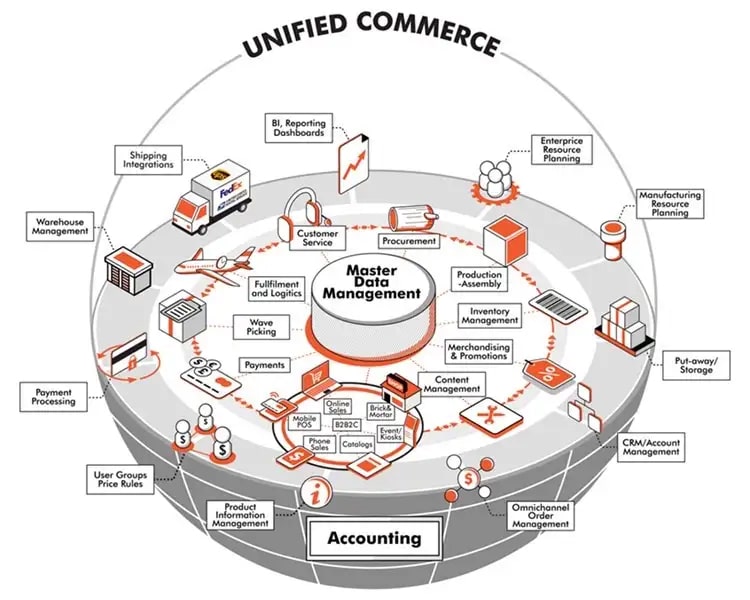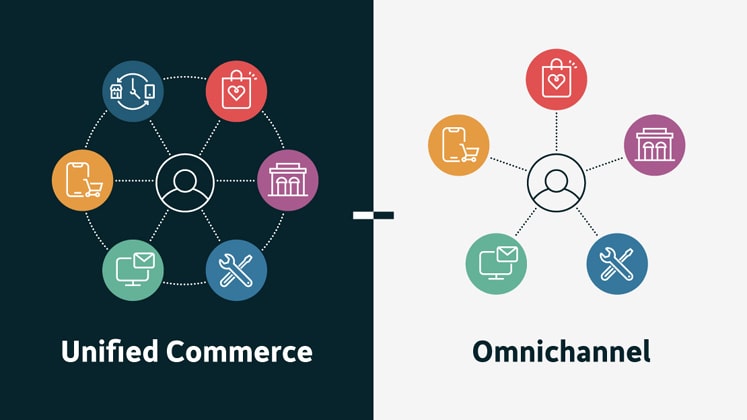‘Seamless and frictionless’ concepts are both holy grail for retailers and every outlook of their implementation is interconnected with how to actually leverage the customer experience of purchasing goods. Whether it’s a PWC report that talks about 86 per cent of customer willingness to spend more on improved services or a Forbes study stating about consumers paying 17 per cent more to purchase from a company with a reputation of great service – all these prove that everything circles back to putting ‘customers first’.
Unified commerce is assisting retailers in keeping up with the latest trends by offering competitive prices and enhancing the customer experience, all the while effectively managing their inventory and supply chain.
Customer service has been and will continue to be the primary factor in retail success. Retailers who provide a remarkable experience from start to finish, regardless of where or how a customer shops, generate long-term customer loyalty, which leads inevitably to long-term business profitability.
Maintaining this competitive edge calls for a next-phase rollout of ‘Unified Commerce’ which combines multichannel and omnichannel shopping into a single process. Retailers have realised that it’s no longer good enough to have a physical store and an online store that operate separately, rather unified commerce is an approach to retail that integrates all sales channels, including in-store, online, mobile and social. This means that customers can purchase products through any of these channels and have a consistent experience regardless of how they choose to shop.
“Unified commerce is the practice of providing flexibility, continuity and consistency across digital and physical channels to deliver a superior customer experience. This consistency includes multiple phases of the customer’s buying journey, including when a customer is searching, browsing for, transacting, acquiring and consuming a product or service.”- Gartner
An integrated single platform makes retailers better serve the customers
Retailers have a complete picture of their customers by tracking data across all channels via a single central system. Unified commerce in many ways helps brands and retailers to make decisions about marketing, product development and other strategic areas of business. Not only this, it is also helping to increase operational efficiency by streamlining back-end processes such as inventory management and order fulfilment. Additionally, retailers are also eliminating the duplication of data entry, optimising their stock levels and tracking orders from start to finish as well as identifying the bottlenecks in advance. All these are leading to a clear image of the customer buying pattern and much greater sales conversion, therefore, improving the bottom lines of the business and significantly saving costs for the company as a whole.
A Transition from Omnichannel to Unified Commerce
There is no doubt that customers are using multiple channels throughout the buying process. For example, they may begin researching products on a mobile device before making a purchase in a physical store, or they may start by adding items to their virtual shopping cart while on a laptop before completing the transaction on their smartphones. Seeing this swift trend, retailers are adopting unified systems to fill the voids in the omnichannel delivery customer experience.
Nike is one such retailer which has increased its sales with a unified commerce strategy by linking to various hubs and maintaining the information flow in a centralised system. Nike customers are having options to buy online and pick up in the store making an in-store purchase with home delivery. Also, by allowing sales associates to complete transactions anywhere in the store, mobile point of sale helps to reduce the wait time for customers. Besides this, with the Nike+ app, customers scan barcodes in offline stores to purchase items, therefore saving time. Additionally, previously registered payment methods provide hassle-free checkout. Nike’s websites, shopping apps, activity apps and retail stores share customer membership ids, allowing for personalised experiences and discounts.
30% of Nike’s revenue were invested in digital business, which grew 82% in three months and nearly US $ 900 million in additional revenue was generated.
Another example could be of e-commerce giant Alibaba. The e-commerce giant in China uses a fashion AI that analyses customer behaviour by tracking their activities. While entering the retail store, customers are asked to scan their mobile application, which links their shopping experience to their online Alibaba mobile application. Adding to this are the smart mirrors placed in the retail store that display the product information and mix and match product recommendations upon touch. To top it all, the virtual wardrobe feature in the app enables people to buy products they might have tried in the store and the registered payments previously linked actually aid in a hassle-free experience.
As stated by Alibaba, “We unify all of your customer touchpoints onto one unified platform by connecting our backend system with a consumer-facing channel.”
Cloud-based applications assist in streamlining the processes
Among the many applications available, Envista and Microsoft Dynamics 365 are unified commerce cloud-based platforms that remodel the way retailers connect their businesses. The applications provide intuitive, user-friendly business tools that effectively manage processes across sales, marketing and supply chain departments. These cloud-based applications, which are fully accessible through the different devices employees use on a daily basis, deliver the data and analytics that attune employees to customer needs, desires and preferences.
Unified commerce approach emphasises the new shift in technology adoption for retail businesses, where technology is core to the retail operation, providing a responsive system for unmatched experience and growth.
Brands fine-tuning with solution providers for unified commerce approach
Indian brands are racing towards the unified commerce approach and partnering with solution providers to actually cater to the expectations of the consumers and overcome the shortcomings of the omnichannel shopping experience. Solutions also feature built-in machine learning to aid businesses in predicting sales and controlling inventory. Platforms usually have the ability to provide unified data across channels.
“Rubicon 3.0 is our latest unified commerce platform that uses machine learning to support omnichannel selling, filling orders from any stock point and getting a single view of the product, inventory and customer.” – Nitin Chhabra, CEO, Ace Turtle Services Ltd.
Shopify India is also a firm believer in the power of the platform to personalise the shopping experience for customers by providing them with real-time information about product updates. A number of well-known companies, including adidas, Nike, Wildcraft, Decathlon, Lee and Wrangler have formed strategic alliances with various unified commerce solution providers in order to improve the quality of their customers’ purchasing experiences.









